Is your apartment uncomfortably cold in the winter? Here's how to warm it up without increasing your energy bill.
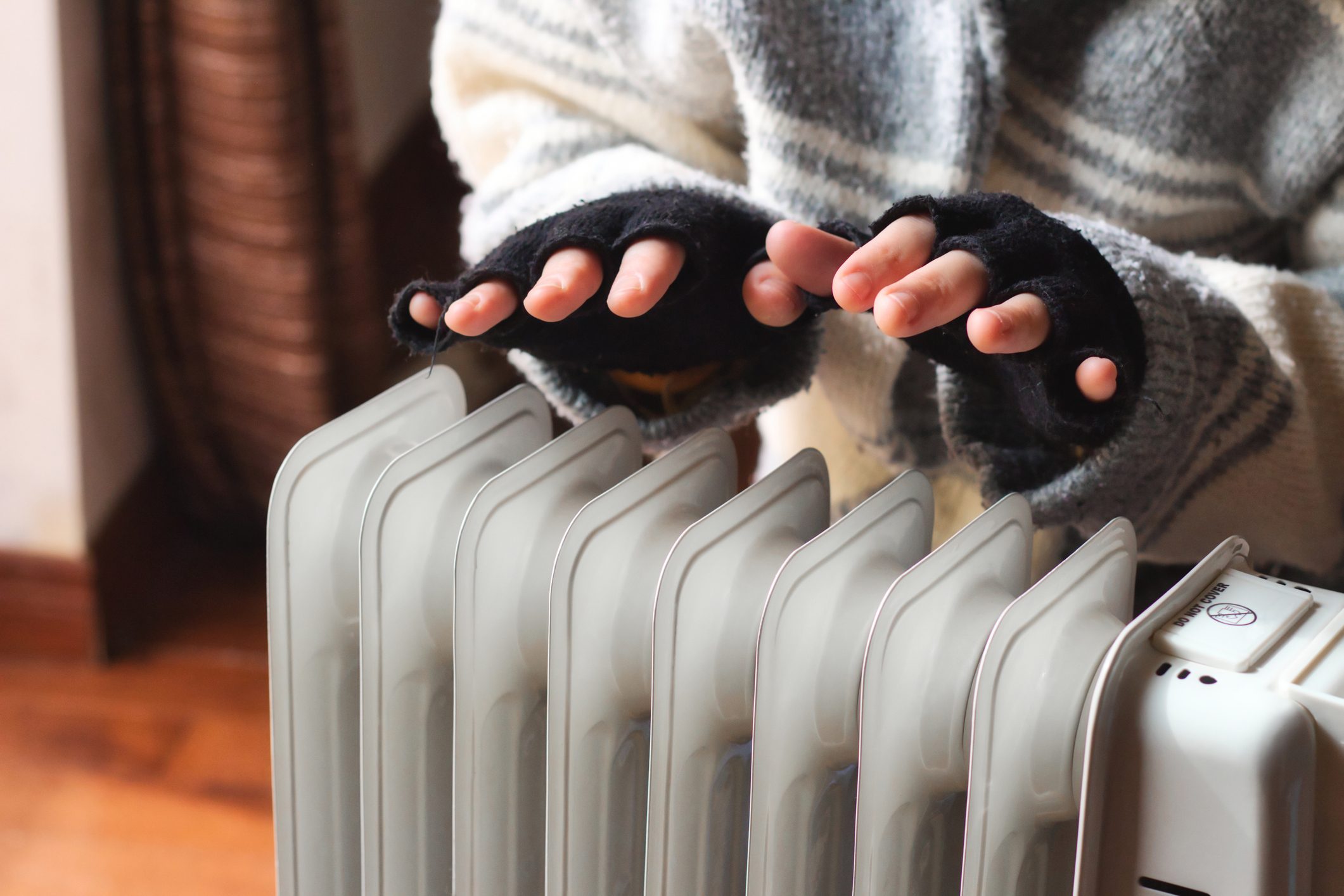
How to Save on Heating Costs in an Apartment

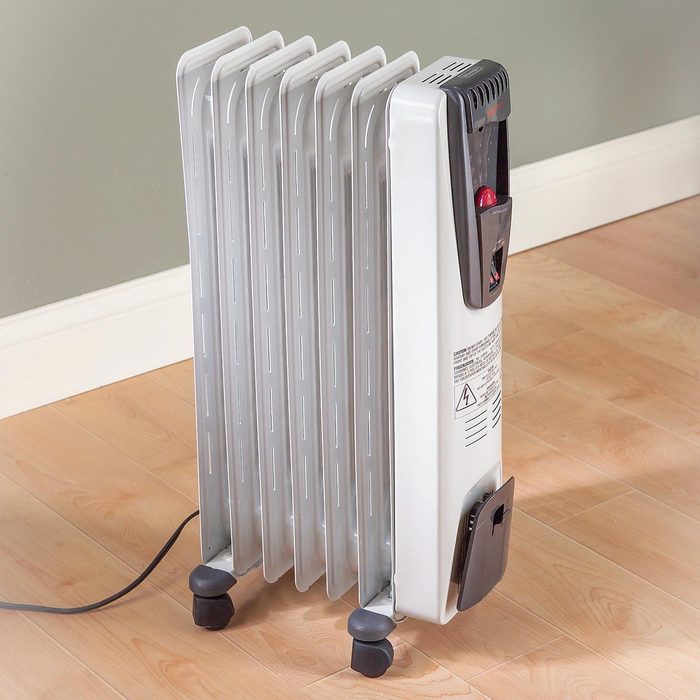
Turn Down the Heat and Still Be Comfortable
We all know the mantra by now – turn down the thermostat during the winter months, and you’ll save money. And it’s true. According to the Department of Energy, for every degree you lower the thermostat, you’ll save 1 percent on your energy bill. But what if your energy savings needs are at odds with how much cold you can tolerate? One easy option is to use a space heater to stay comfortable in the room where family members gather. Fireplaces and fireplace inserts can provide space heating, but electric heaters are the easiest way to warm up a room.

Baseboard, fan-forced air and oil-filled electric heaters all have roughly the same energy efficiency, although oil-filled units are the quietest, but are also larger and heavier. You’ll have to turn down the heat enough (usually 5 degrees F or more) to offset the cost of the electricity used by the space heater and still pocket savings. Space heaters range in price from $30 to more than $100, depending on benefits like remote control, a programmable thermostat and safety features. You can buy them at home centers, discount stores and online.

Remember, space heaters will only cut heating bills if you turn down the temperature in the entire house. The heaters work best in walled-in rooms (rather than in open spaces), where the heat can be contained.
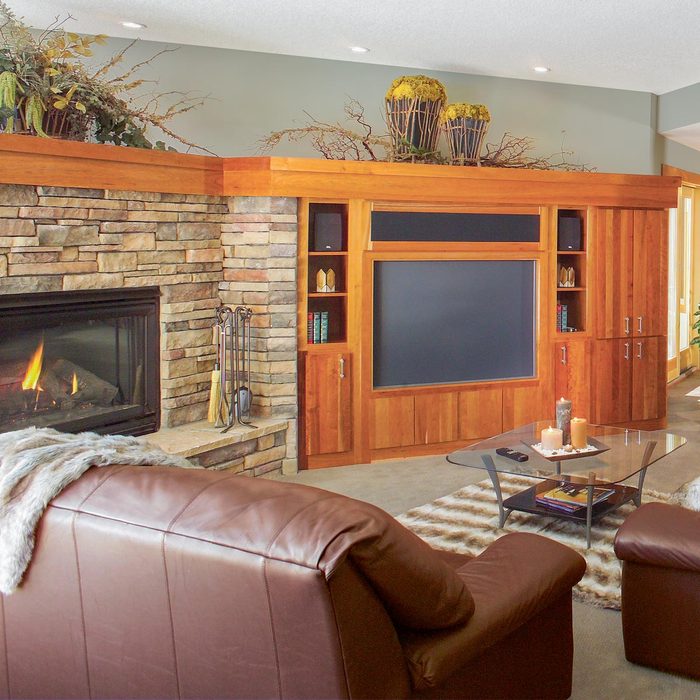
In most cases, you can roughly size the electric heater (in watts, that is, a measure of heat output) according to the size of the room. Our ‘rule of thumb’ is a room less than 100 sq. ft. needs 1,000 watts, a room 100 to 150 sq. ft. needs 1,500 watts, and a room 150 to 250 sq. ft. needs 2,500 watts. This assumes that you only need to raise the room temperature 5 to 10 degrees F for comfort. And we’ve oversized the heaters a bit to handle extra-cold periods.

Space Heater Safety
If you use an electric space heater, always follow these safety tips:
- Keep space heaters at least 3 feet away from drapes, bedding and other flammables.
- Plug space heaters directly into outlets, not into extension cords.
- Don’t use space heaters while sleeping.
- Choose a safe space heater model.
- Establish a designated space heater zone in rooms where space heaters are used. The zone should be clear of blowing drapes and at least 5 ft. away from other combustibles.
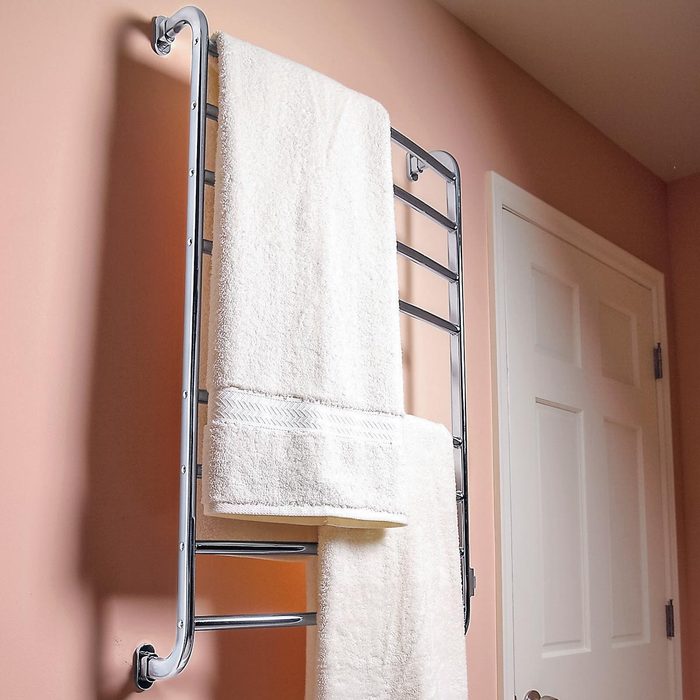
Get a Towel Warmer
A towel warmer can act like a small space heater for your bathroom and provide you with a toasty towel after bathing. There are freestanding units and units that mount to the wall and are plugged in or hardwired. Towel warmers don’t save energy, but they can keep you warm in the bathroom when the thermostat is turned down.
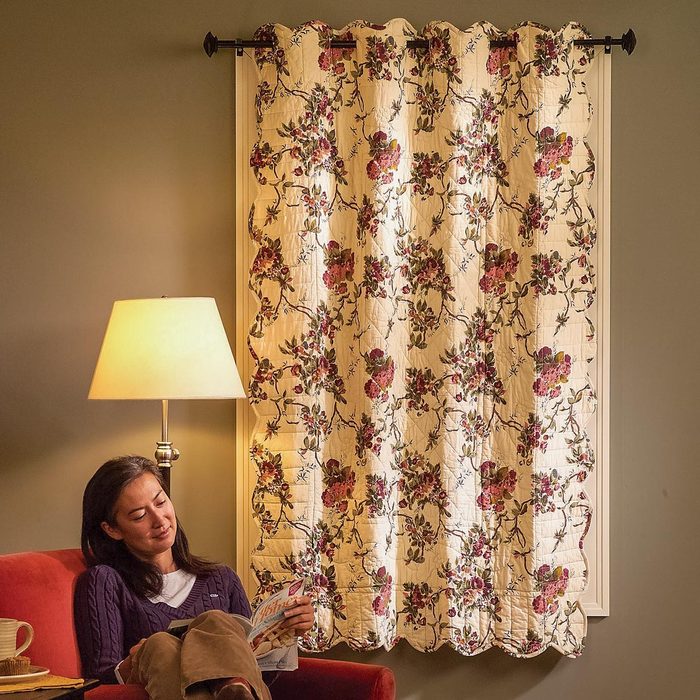
Install Quilted Curtains to Block Drafts
If you’re turning up the heat in the house to compensate for drafty windows, consider quilted curtains. They can increase your comfort and let you keep the temp down. The curtains are available in various colors, patterns and sizes. Prices start at under $100, and a curtain can be installed on your existing curtain rod in less than 10 minutes.
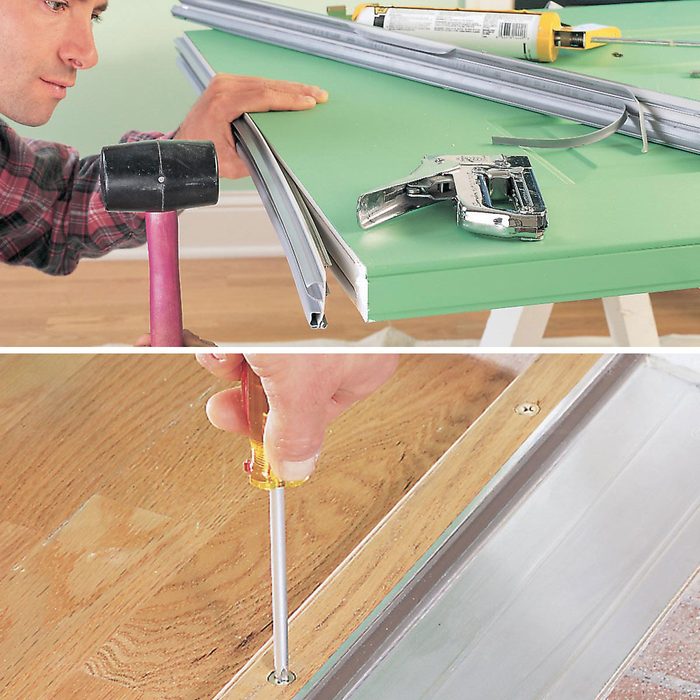
Seal Door and Window Gaps and Leaks
If you can feel the breeze and see daylight under your entry door, it’s costing you big time. It also means you need to adjust your door threshold or install a new door sweep. The hardest part about replacing them is usually taking off the door. Start by adjusting the threshold. Newer versions have screws that raise and lower them. Turn all of the threshold screws until the door opens and closes without much drag, and any draft is eliminated.
If that doesn’t work, or your threshold doesn’t have adjustment screws, replace the door sweep. Close the door and pop out the hinge pins with a pin punch to remove the door. Set the door on a work surface and remove the old door sweep. Caulk the ends of the door, then install the replacement sweep. Some sweeps are tapped into place and stapled along the door bottom; others are screwed to the side along the door bottom.

Foam Sealants
To seal gaps, inject foam sealant. Some sealants will push jambs inward as they expand, so be sure to check the label and use one that’s intended for windows and doors. Most expanding foams are nearly impossible to clean up before they harden. Instead, let the foam harden and trim off any excess foam with a knife.
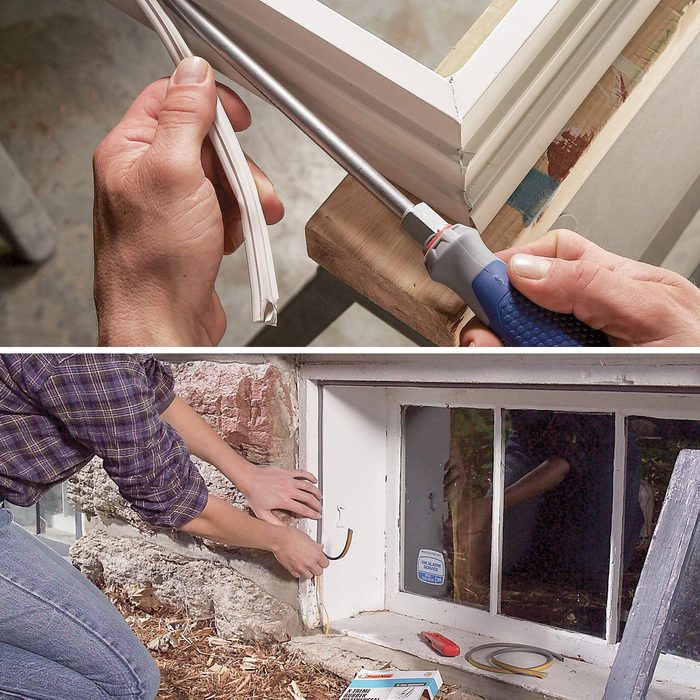
Weather Stripping
Weather stripping often becomes loose, worn or distorted when the sash drags or when the strip gets sticky and attaches itself to the frame, then pulls loose when the sash is opened. Windows have weather stripping on the sash, frame or both. Rudin says that sealing gaps and cracks “can prevent air from escaping, which can, in turn, save money on heating and cooling bills by keeping the treated air inside where it should be.”
Regardless of its location, the steps for removing and replacing it are the same. Weather stripping is available from your window manufacturer or online. The window brand and glass manufacturer date are etched in the corner of the glass or in the aluminum spacer between the glass panes. You’ll also need the height and width of your sash (take these measurements yourself).
If the weather strip is in good shape and loose in only a few places, like the corners, apply a dab of polyurethane sealant to the groove and press the weather strip into place. Otherwise, replace the entire weather strip. First, remove the sash and set it on a work surface to access all four sides. If the weather strip is one continuous piece, cut it apart at the corners with a utility knife.
Starting at a corner, pull the weather strip loose from the sash. If the spline tears off and remains stuck in the groove, make a hook from stiff wire to dig it out. Work the new weather strip into the groove, starting at a corner. You’ll hear it click as the strip slides into the groove.
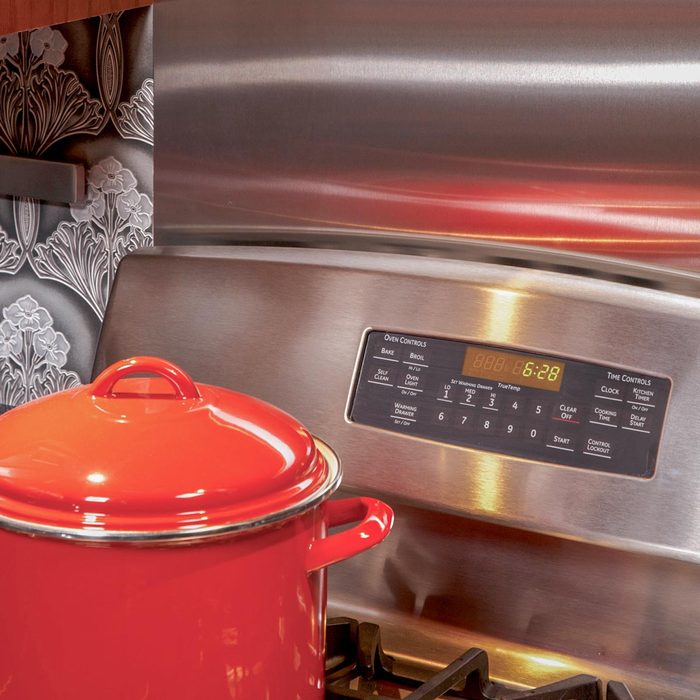
Heat Some Rocks
Take clean, smooth rocks and warm them up in a pan of water on the stove or in the oven. The rocks don’t have to get hot, just warm. Using oven mitts, place the heated rocks in a cloth bag or a sock and hold them in your hand, place them near your feet in bed, or simply keep them near you for a gentle warm-up.
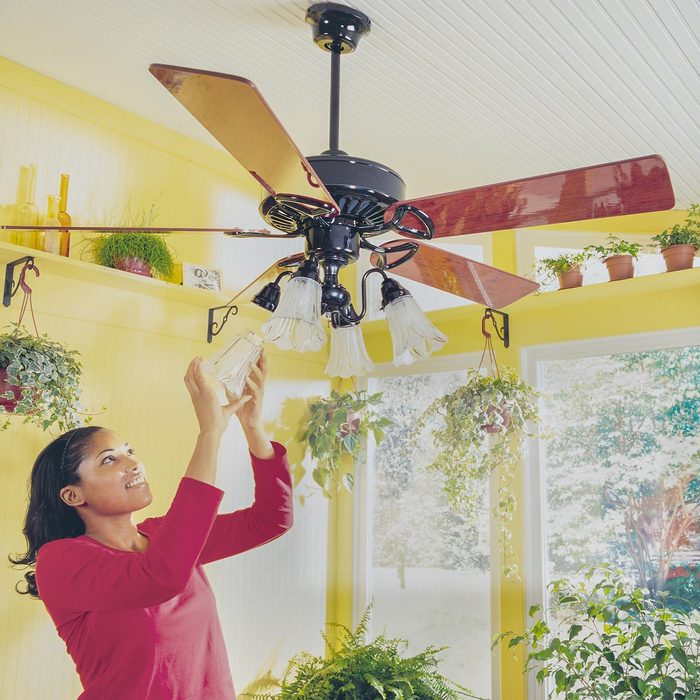
Reverse Your Ceiling Fan
“Ceiling fans are a great way of keeping the air moving in an apartment, and that can have a dramatic effect on the air treatment bills,” Rudin advises. In the winter, reverse the motor by flipping the toggle switch on the motor housing. Operating the ceiling fan at low speed in the clockwise direction produces a gentle updraft, which forces warm air near the ceiling down into the occupied space.
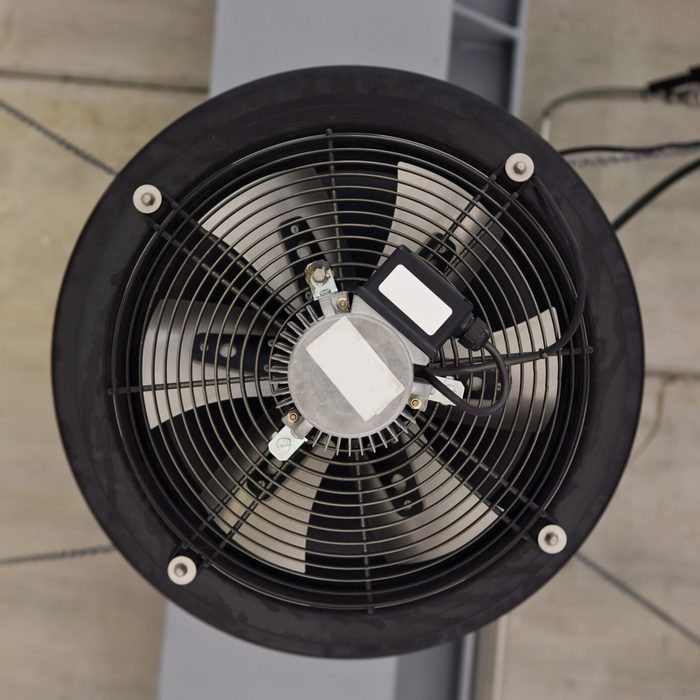
Use Heat Redistribution Fans
In addition to reversing your ceiling fans, look into other fan options to help redistribute the heat around your home. Mitchell says to “consider installing doorway fans or heat-powered wood stove fans to redistribute warm air from heated rooms to cooler parts of the apartment.”
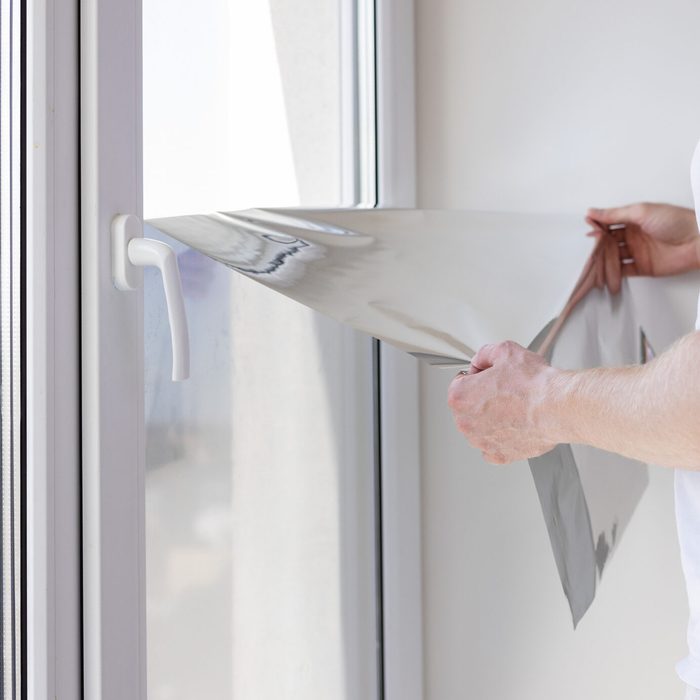
Apply Radiant Barrier Film to Windows
Windows can be a major source of lost heat in your apartment. If your home has older windows, and your landlord won’t replace them, you still have options. “Beyond typical insulation, applying a low-emissivity film to your windows can reflect heat into your home, reducing heating costs by up to 10 percent,” Mitchell advises.
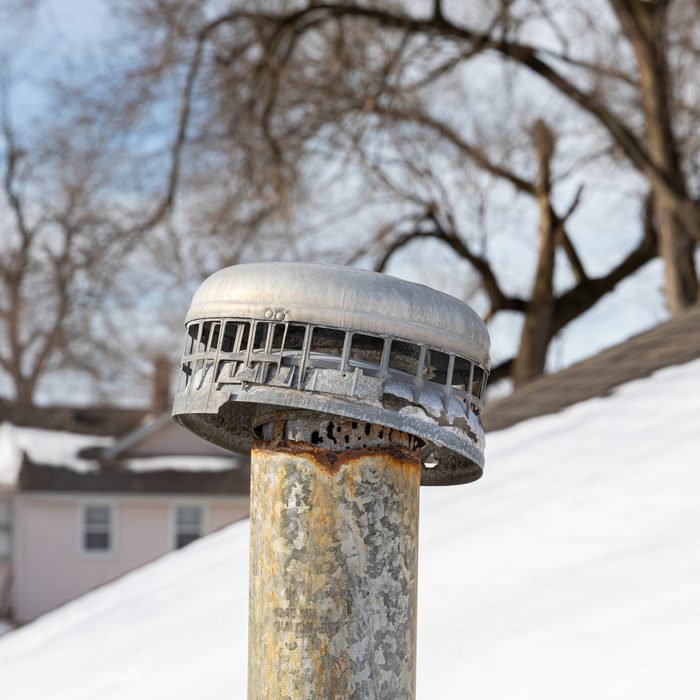
Control Drafts Creatively
Another common source of heat loss is the chimney. If you’re not using yours, Mitchell says you can “use a ‘chimney balloon’ or ‘flue blocker’ to block [it]. This can save around $100 annually in energy costs by preventing heat from escaping and cold air from coming down the chimney.”
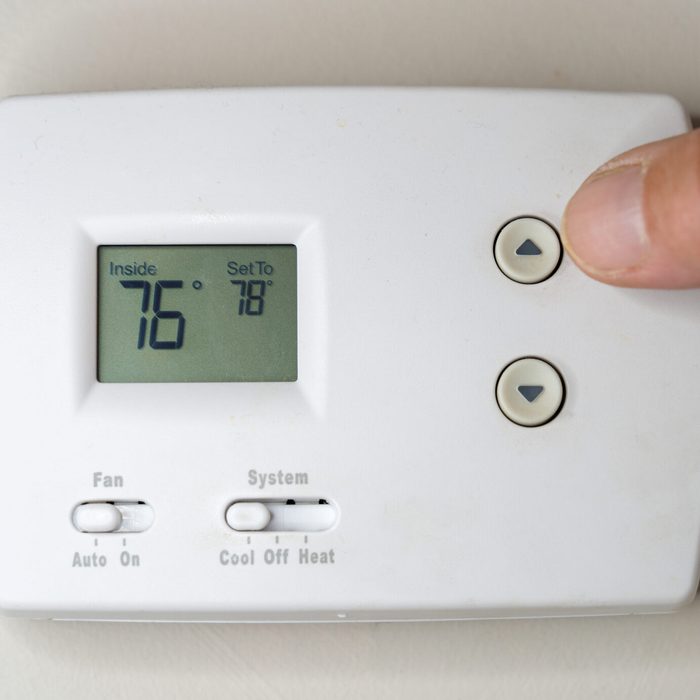
Strategically Use LED Lighting
You may have already heard the praises of LED lights sung when it comes to keeping your home cool and reducing your energy load, but they can also help in winter. According to Mitchell, “LEDs use less electricity and produce less heat, allowing your thermostat to operate more efficiently during winter. This can indirectly reduce the strain on your heating system.”
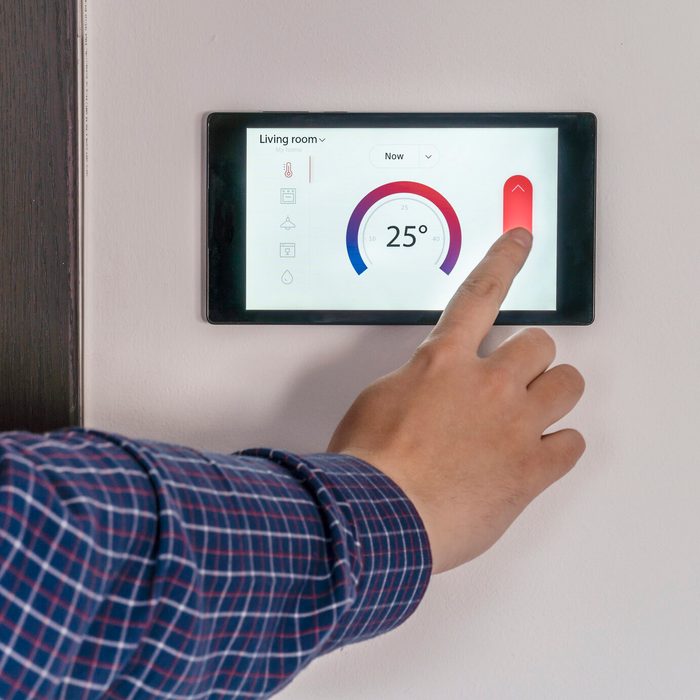
Enhance Humidity Control
Keeping your place the right level of humidity is yet another way to keep your home warm, and your chapped hands and lips will thank you. Mitchell explains, “Moist air feels warmer than dry air, which can help you feel comfortable in a lower thermostat setting. Proper humidity levels can make a room feel warmer at a lower actual temperature, saving you around 3-5% on heating costs.”
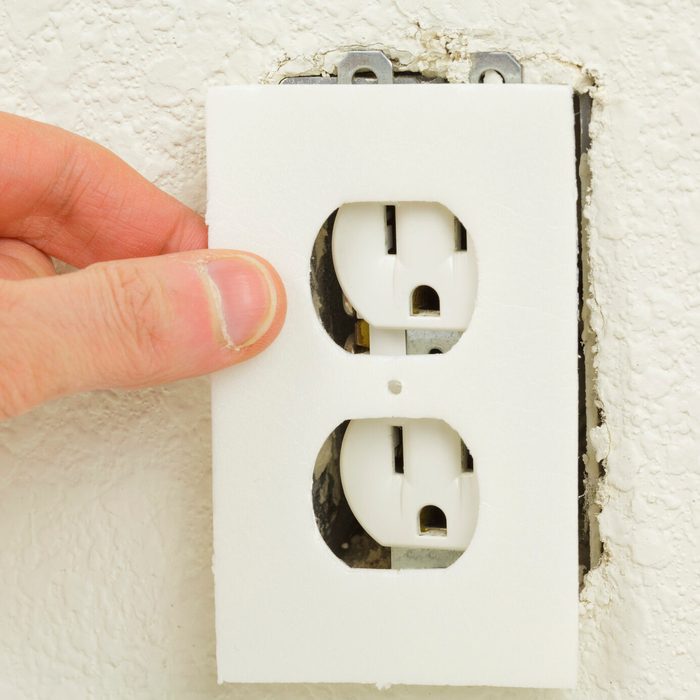
Seal Electrical Outlets
Electrical outlets are an oft-forgotten heat loss source. Mitchel suggests that you “insulate behind electrical outlets and switch plates on external walls with foam gaskets. This prevents cold drafts from seeping in.”
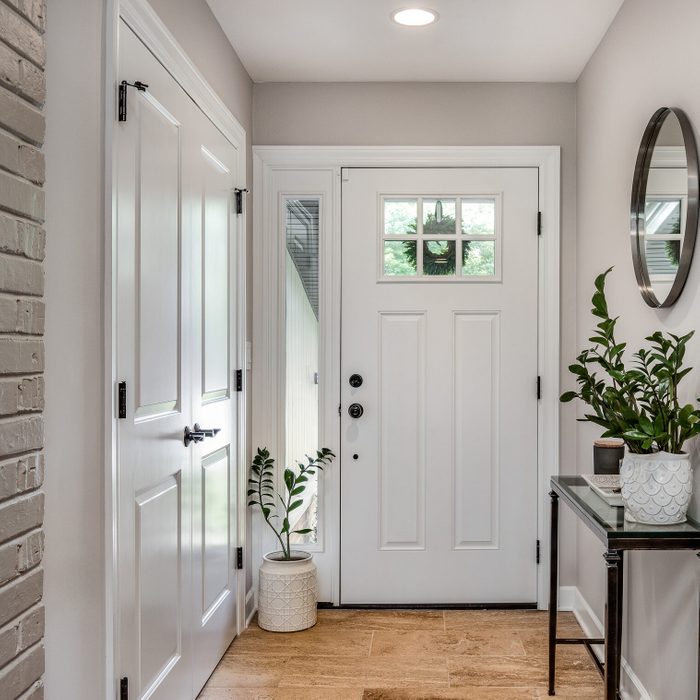
Implement Thermal Buffer Zones
Heating your entire apartment is a huge energy and cost investment. Instead, Mitchell says to “use internal doors to create buffer zones in hallways or less-used rooms. Keeping these doors closed can trap heat in important living areas where you spend the most time, reducing the space you need to heat.”
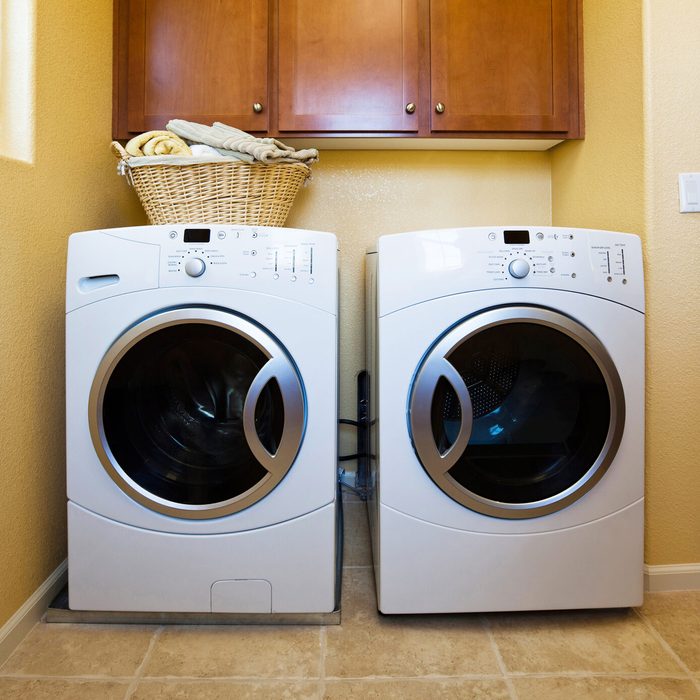
Schedule Appliance Use
“Run heat-generating appliances like washers, dryers, and dishwashers during colder evenings. This can add extra warmth to your space without increasing your heating bill,” Mitchell suggests.
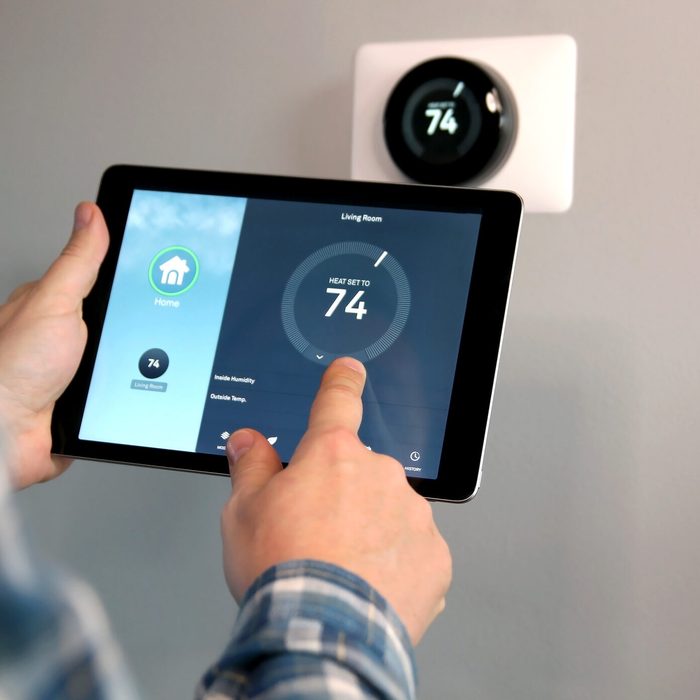
Smart Thermostat
Smart thermostats are easy to adjust as needed to keep energy costs down. Rudin explains, “Even renters can put in their own smart thermostat and then reap the benefits from the energy savings.” If you don’t know how to install one yourself, he suggests you “opt to pay for it and keep it in place and your landlord might be convinced to get it installed for you.”
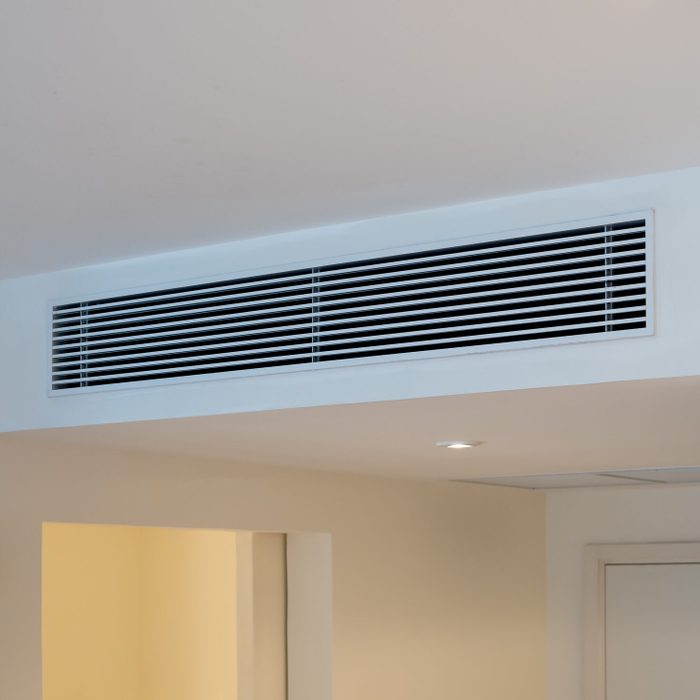
Maximize Circulation
Air circulation can help heat otherwise cold rooms more efficiently. Rudin suggests taking stock of the airflow in your home to determine how best to direct it.
“If you have air registers in some rooms that get good airflow, it might be best to direct some of the air to other places by closing off a few vents, or opening some up more,” he says, adding: “Even the direction of the register fans will improve or decrease airflow. Maximizing airflow helps reduce air treatment costs by preventing pockets of stagnant air from causing irregular HVAC on/off cycles when those air bubbles migrate.”

Dress Accordingly
Our final tip involves adjusting your habits. Rudin suggests you “put on a sweater rather than cranking the heat in every room you aren’t spending time in.”
If you’ve implemented all our other tips, your home should retain more heat to begin with, so you shouldn’t have to add too many layers to get comfortable.
Ways to Save Energy and Still Stay Warm During Winter
Whether you’re battling rising heating costs or simply looking for cozy winter solutions, these tips will help you stay warm and save energy.
- Why Are Heating Bills Increasing This Winter?
- Ways to Cut Your Heating Bills
- Simple Tricks to Keep Your House Warm All Winter
- Unexpected Ways to Keep Your House Warm This Winter
- DIY Projects to Keep Your House Warm This Winter
- Ways to Warm Up a Cold Room That Actually Work
- How to Keep Your House Warm During a Power Outage
- Best Ways to Heat a Garage In the Winter
- Heating Myths You Need to Stop Believing
- Simple Heating and Air Conditioning Fixes
- Does Closing Heat Registers Save Energy?
- Why You Shouldn’t Close Off Vents to Save Money in the Winter
- This Fan Trick Can Keep Your House Warm All Winter
About the Experts
- Josh Mitchell is an HVAC technician with Air Conditioner Lab.
- Josh Rudin is the owner of ASAP Restoration, LLC. His company focuses on helping people restore their homes and businesses after disasters.


















